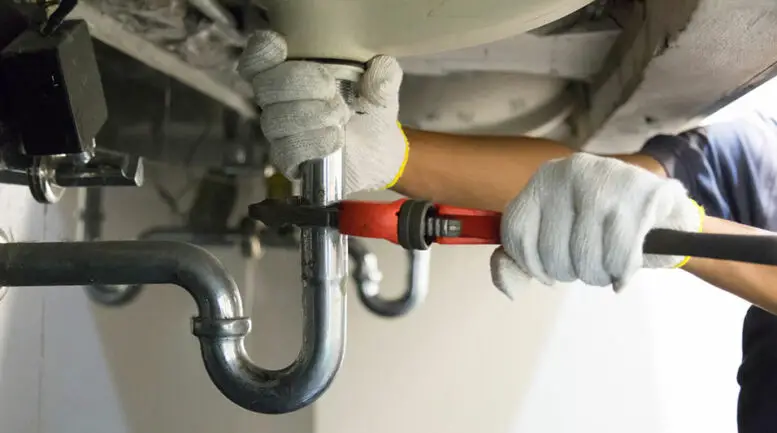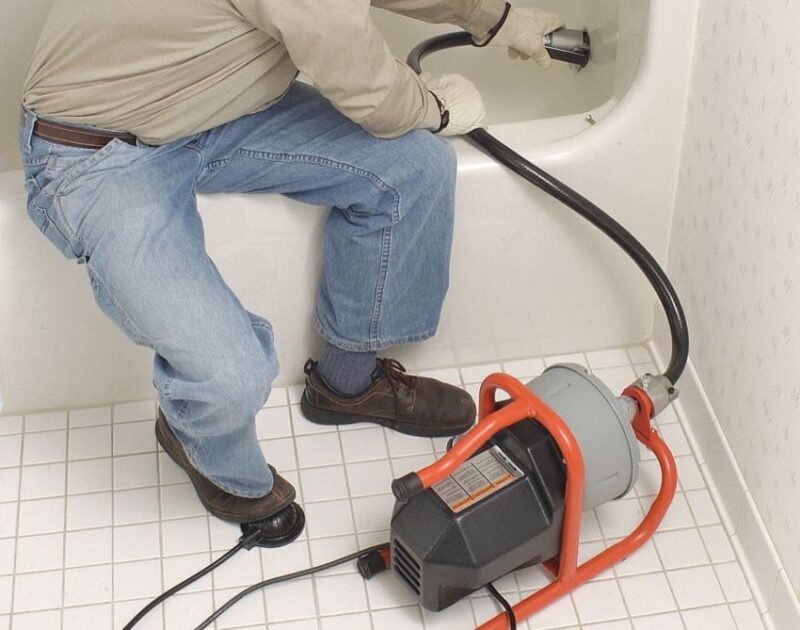Are you familiar with plumbing issues in apartments?
Finding affordable housing in cities and towns is often difficult. But apartments can provide an adequate solution. Unfortunately, all apartments are susceptible to a wide range of issues, with the most prevalent being plumbing.
Pipes, fittings, and fixtures must withstand heavy use and varying water pressure. As a result of this complicated system, each component must function properly to avoid costly problems.
The plumbing system is often shared across the property, and you need more control over what others do with their sinks and drains. This article will outline apartment complexes’ most common plumbing issues, how often they occur, the repair price, and if they could be fixed by DIY.
Common Plumbing Issues in Apartments

- Leaky Pipes
Leaky pipes are one of the common plumbing issues in apartments. It is caused by corrosion, shifting of the pipes, or broken seals. Even if a leak is minor, it can still waste hundreds of gallons of water if left unchecked.
Leaks such as a dripping sink are not always evident. Damage to your hard-to-reach pipes might occur without your knowledge, so you should frequently check your utility statement for excessive water usage.
Burst pipes cause excessive water leakages. For example, tree roots break underground pipes, too old and brittle pipes easily break, and corrosion eats up and weakens metal pipes.
- Dripping Faucets
Dripping faucets are another prevalent apartment plumbing issue. Dripping sinks can cause damage to floors, walls, cabinets, and furniture [1].
Dripping faucets are frequently repaired by replacing an internal rubber washer that has worn out, enabling water to flow around it. Repairing drips can also be achieved by tightening connections or adding thread tape to create a barrier that prevents leakage.
- Frozen Pipes
Some parts of the world experience freezing temperatures, thus affecting the plumbing system in these areas. When the temperature drops below freezing, the pipes delivering water into and out of the apartment may freeze [2].
Understanding the risks of cold weather on plumbing is critical since frozen pipes may be disastrous for apartment dwellers. Icy water increases internal pressure in pipes, causing cracks or breaks that cause water damage.
Frozen pipes can snap or rupture, causing severe leaks or flooding in one or more residential units. Such surges can cut apartment dwellers’ water supply for hours or even days [3]. Apartment owners should consider insulating plumbing lines to reduce the risk of freezing.
- Clogged or Slow Drains
One may wonder how a high-rise apartment might flood, but it happens. Clogged drains are the most common source of floods in such circumstances.
Clogs are frequently caused by hair, grease, soap scum, dirt, and other debris that has built up over time, preventing water from flowing.
To prevent clogging, avoid flushing anything other than organic material and toilet paper. Flushing soap, toys, clothing, medicine, and feminine hygiene products can produce significant clogs because they are not designed to degrade in drainage systems. [4]
Call a plumber immediately if you’ve done everything and the water still won’t drain efficiently. Something else could be causing the water to drain slowly. If it’s not addressed by a professional, this could lead to cracked pipes and water damage, even in the neighboring apartments.
Related: Home Remedies For Clogged Drains
- Rusty and Dirty water
Another common plumbing issue one will encounter in an apartment is dirty water. Rust forming inside metallic pipes is the most common cause. Water that has accumulated rust will often taste metallic and appear brown.
This issue mostly affects your faucets. If this is the case, the matter would be limited to the pipes that connect to that faucet. However, the main line might need repair if dirty water affects all of your fixtures.
- Flooding in the bathroom and ceiling damage
A lack of drainage pipes or an unintentional overflow from a bathtub or sink typically causes flooding. Flooding bathrooms is one of the most severe problems in apartment living because it poses the risk of ceiling damage in a multistory building [5].
Water can seep into the upper floor and destroy the ceiling below it, affecting any room under the flooded area. This type of damage is significant and costly to fix. Be cautious about what you dump down the drain to avoid this issue.
- Running Toilet
A running toilet can be quite expensive. It can waste up to 200 gallons of water daily. The most common cause is a defective flapper valve regulating water flow from the tank to the bowl.
Although less common, toilet runs are caused by sediment interfering with flushing and filling. When this occurs, the worst thing that happens is unnecessary water waste.
If your toilet is constantly running, it indicates an internal problem, such as a floating device or a loose-fill tube that prevents the water from flushing correctly. Inspect all toilet parts regularly to ensure they are in good working order. [6].
If your water costs are unusually high, look for slow leaks by putting some food coloring in the more elevated tank and seeing if it makes its way to the bowl without being flushed.
- Clogged Toilet
Toilets are usually the most vulnerable because they are often used and quickly accumulate debris, especially in apartments. Clogs can arise for various causes, including the accumulation of paper and other waste in drain pipes or the failure of sewage systems.
In many circumstances, a simple toilet plunger can solve the problem. Plunge the toilet drain many times to see if the extra pressure from the plunger would help to clear the clog [7].
If this does not work, you may need to physically break up the clog by inserting a drain auger or “snake” into the plumbing drain. If these procedures fail, professional assistance from a plumber might be required.
- Backup of the Sewer System
Backups of sewer systems are the most likely problem if you have many drains and toilets that aren’t working. The issue is accompanied by a strong odor of human waste.
Sewer backups can be smelly, disgusting, unsanitary, inconvenient, and costly to repair. Suppose the main sewer is clogged.
You will very certainly require expert assistance to resolve this. To avoid this in the future, check what you flush down the toilet. Ensure no diapers, face tissues, or napkins and grease are not flushed down the drain.
- Water Pressure Issues
If the water from your tap barely trickles instead of bursting out, you may have a pressure problem. The most common reasons for low water pressure are mineral deposits, accumulation, clogged sewers, hidden water leaks, and pipe corrosion.
As a result, regular pipe cleaning is advised. The low water pressure might also be detected if the primary pressure regulator fails or the shut-off or water meter valve is not fully open. This is usually because another recent repair led the plumbers to close the valves temporarily.
You can use vinegar to clean the aerator in your kitchen or bathroom faucets. If the problem persists, call a licensed and experienced plumber. In this manner, you can avoid costly future repairs.
Related: No Water Pressure in Shower But Plenty Everywhere Else
Fixing Common Plumbing Issues in Apartments

The cost of professional plumbing repairs can vary substantially. The variation is based on the type and location of the repair required. For instance, a basic faucet repair may cost between $50 and $100, whereas a damaged pipe repair could cost hundreds of dollars [14].
Repair of sewer line can become quite expensive and can range from $500 to $2,000 or more, depending on how complex the project is.
However, minor plumbing repairs, such as replacing a washer in a faucet or clearing a clogged drain can be performed without the assistance of a professional plumber.
But more complex issues, such as broken pipes, fixtures, or sewer line problems will almost certainly necessitate the assistance of a professional plumber.
In addition, any repairs that include cutting into walls or removing big pieces of piping should be left to the professionals.
Read Also: Tall vs Short Water Heater
Conclusion
Whether you are an existing tenant or relocating for the first time, you should know the most usual plumbing issues in apartments. Apartment buildings are a prevalent form of housing for many individuals.
As a result, plumbing problems are readily disregarded because they need to be visible for the occupant to take action. However, if these vulnerabilities are not addressed, they can generate significant health hazards and safety concerns.
Examples are floods, mold growth caused by moisture, overflow from a defective toilet or sink, and floor drain issues. These problems need attention right away.
If an issue in one unit is not resolved quickly, it might spread to adjacent apartments and become a bigger problem. Regular maintenance and repairs by experts are recommended to keep the systems operational. Essentially, having high-quality plumbing pipes and fixtures keeps the system running smoothly.
Read Next: Worms in Toilet

Michael Davis is a heating & plumbing expert who currently works as independent contractor in SC. He also writes for Plumbertip.
For almost 10 years he worked on various plumbing tasks across South Carolina.



